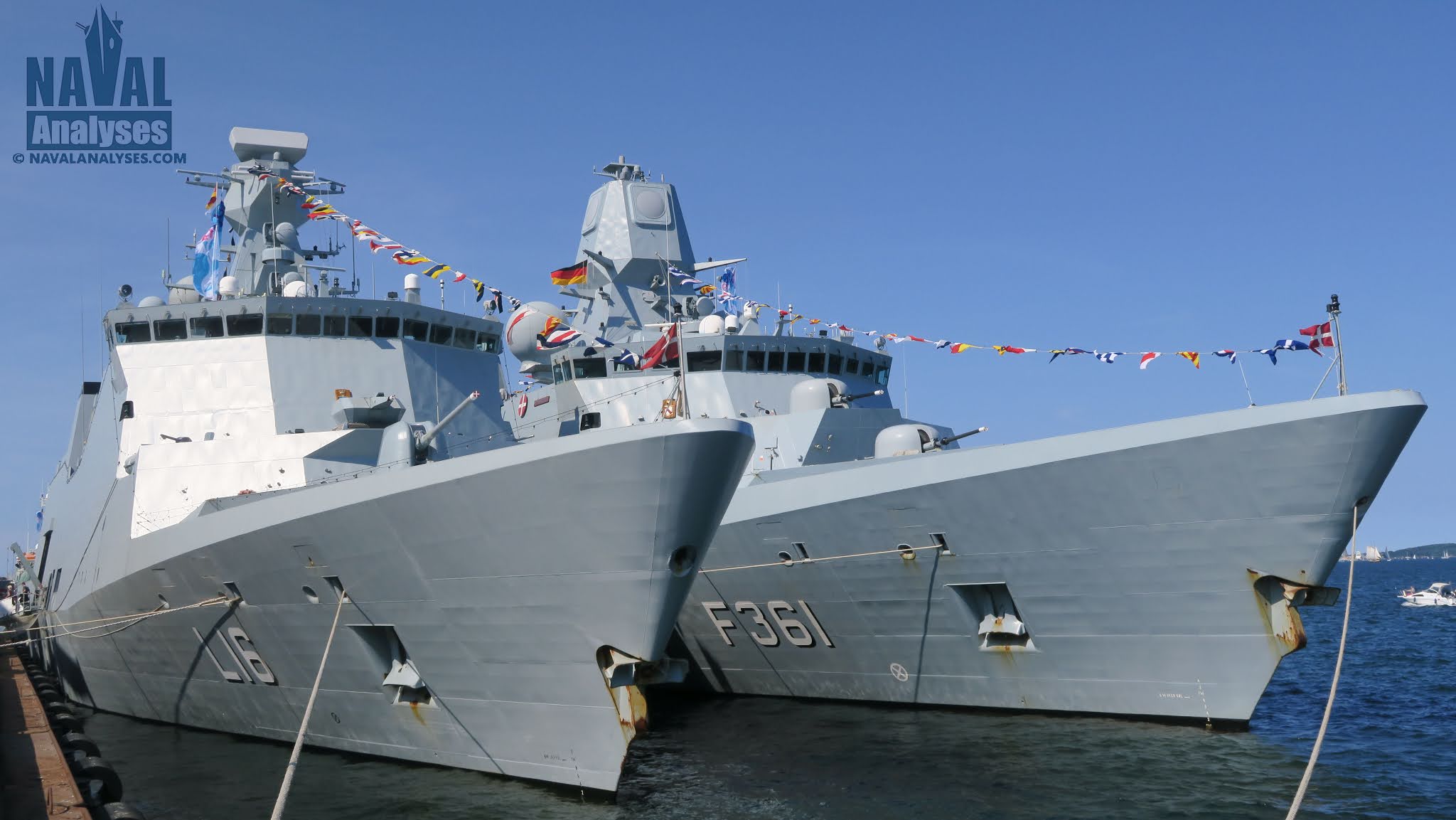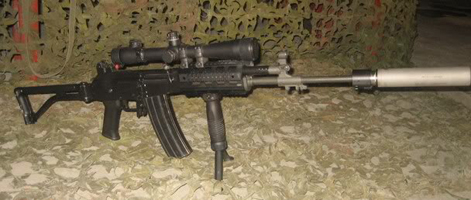
Marinha da Dinamarca
Moderador: Conselho de Moderação
- P44
- Sênior

- Mensagens: 56137
- Registrado em: Ter Dez 07, 2004 6:34 am
- Localização: O raio que vos parta
- Agradeceu: 3015 vezes
- Agradeceram: 2710 vezes
Re: Marinha da Dinamarca
PHOTO GALLERY #37: Absalon and Iver Huidfeldt, frigates of the Royal Danish Navy

 https://www.navalanalyses.com/2021/02/p ... -iver.html
https://www.navalanalyses.com/2021/02/p ... -iver.html

*Turn on the news and eat their lies*
- cabeça de martelo
- Sênior

- Mensagens: 41790
- Registrado em: Sex Out 21, 2005 10:45 am
- Localização: Portugal
- Agradeceu: 1265 vezes
- Agradeceram: 3276 vezes
- Goldfinger
- Intermediário

- Mensagens: 287
- Registrado em: Sáb Fev 12, 2011 3:44 pm
- Agradeceu: 128 vezes
- Agradeceram: 80 vezes
Re: Marinha da Dinamarca
Para defender a Groenlândiacabeça de martelo escreveu: Qui Mar 27, 2025 1:23 pm
Ou seja, a Marinha Dinamarquesa vai ter 9 Fragatas?!
------------------------------------
Do you expect me to talk?
No, Mr. Bond. I expect you to die.
Do you expect me to talk?
No, Mr. Bond. I expect you to die.
- cabeça de martelo
- Sênior

- Mensagens: 41790
- Registrado em: Sex Out 21, 2005 10:45 am
- Localização: Portugal
- Agradeceu: 1265 vezes
- Agradeceram: 3276 vezes
Re: Marinha da Dinamarca
Denmark unveils major naval investment programme

Citing the Russian threat in the Baltic Sea and the vulnerability of subsea infrastructure, the Danish government has announced a major new naval investment programme, with dozens of new vessels and systems to be delivered in the short and longer term.
The Danish government has announced plans to dramatically strengthen the Royal Danish Navy in response to increased strategic risks posed by Russia and the growing importance of maritime security in the Baltic region. With a budget commitment of 4 billion Danish kroner (around £460 million) for the near term and more to follow, the investment focuses on speed of delivery and enhancing sovereign capability across a broad range of maritime tasks.
Danish defence spending will rise to 3% of GDP. While the Starmer government has committed to spend 2.5% of GDP on defence by 2027 with a vague ambition to achieve 3% sometime in the future, smaller European nations are rising to the challenge of Russia with an urgency and realism that is sadly lacking in Westminster.
CUI and littoral focus
A notable feature of the announcement is a new emphasis on protecting Critical Underwater infrastructure. Denmark’s seabed is laced with a dense web of pipelines and data cables that carry electricity, natural gas, and information across Northern Europe. Following the UK’s lead, Denmark will acquire a new seaborne surveillance vessel designed specifically to protect CUI.
There is also a dedicated programme to trial and integrate other autonomous maritime systems, which are increasingly seen as key enablers in modern naval operations. These include UUVs for mine countermeasures, as well as surface and aerial drones to extend situational awareness.
Four new multi-role vessels will form the core of Denmark’s marine environment emergency response but will also contribute to mine warfare, underwater surveillance, and personnel training. These ships will be capable of chemical and oil spill response while also offering utility in more traditional military roles, including the laying of sea mines and monitoring maritime activity.
Additionally, the Danish Marine Home Guard, which supports naval operations in surveillance, port security, and rescue tasks, is to be equipped with 21 new vessels to replace ageing boats currently in service. These modern platforms are expected to improve operational readiness and resilience, particularly in littoral and harbour areas where they operate closely alongside regular navy units.
Long-term ambitions
While the focus of the near-term funding package is on speed and capability in the littoral environment, this is just the beginning of a longer-term transformation. The agreement outlines an intention to strengthen Denmark’s ability to contribute to NATO-led operations and improve its high-end naval combat power. Central to this ambition is the replacement and modernisation of the three Iver Huitfeldt-class air defence frigates that entered service in 2011. These remain some of the most capable warships in Northern Europe, with advanced sensor and missile systems that support NATO’s ballistic missile defence architecture. However, upgrades and potentially new ships will be needed to keep pace with evolving threats.
In March 2024, HMDS Iver Huitfeldt suffered significant weapon system failures during an engagement with Houthi drones in the Red Sea. In April 2024, HMDS Niels Juel suffered a malfunction of the Harpoon missile system during routine tests while alongside in Korsor, forcing the closure of nearby airspace and shipping lanes, although fortunately, the missile did not launch. These issues highlighted readiness concerns that are now being addressed.
The Danish MoD has indicated that the next stage of investment will focus on air defence and strike capabilities, potentially through a successor class of frigates or a major life-extension and systems upgrade programme for the current fleet. This aligns with wider NATO concerns about missile saturation attacks, hypersonic weapons, and the need for integrated air and missile defence (IAMD) across Northern European waters. Domestic Danish naval construction capability is limited but the intention is to build and develop these high-end warships using local yards and suppliers if possible.
Denmark’s naval force has traditionally focused on peacetime tasks, environmental protection, and participation in international coalitions. The deteriorating security situation in the Baltic is forcing a reassessment of roles and priorities. The new investment marks a significant strategic shift towards maritime defence and deterrence closer to home and a pragmatic approach by a small nation facing complex challenges with limited resources.
Implications for regional partners
With Finland now a full NATO member and Sweden expected to follow imminently, the Baltic is set to become a more integrated and heavily defended space. Denmark’s geography, straddling the entrance to the Baltic Sea and controlling key chokepoints such as the Danish Straits, gives its navy a pivotal role in any future alliance operations in the region.
The enhancements to seabed surveillance, maritime domain awareness, and uncrewed systems will also feed into NATO’s broader efforts to improve infrastructure protection across the North Atlantic and European High North. There is increasing recognition that grey zone tactics are likely to characterise the next phase of competition with Russia, and NATO navies must be equipped to respond accordingly.
While the Royal Navy wants to maintain its global posture, Denmark’s latest initiative is a reminder of the importance of credible forces in home waters. Denmark’s naval investment is very welcome and complements UK interests by reinforcing NATO’s northern flank and Baltic presence with modern, scalable platforms.
https://www.navylookout.com/denmark-unv ... programme/

Citing the Russian threat in the Baltic Sea and the vulnerability of subsea infrastructure, the Danish government has announced a major new naval investment programme, with dozens of new vessels and systems to be delivered in the short and longer term.
The Danish government has announced plans to dramatically strengthen the Royal Danish Navy in response to increased strategic risks posed by Russia and the growing importance of maritime security in the Baltic region. With a budget commitment of 4 billion Danish kroner (around £460 million) for the near term and more to follow, the investment focuses on speed of delivery and enhancing sovereign capability across a broad range of maritime tasks.
Danish defence spending will rise to 3% of GDP. While the Starmer government has committed to spend 2.5% of GDP on defence by 2027 with a vague ambition to achieve 3% sometime in the future, smaller European nations are rising to the challenge of Russia with an urgency and realism that is sadly lacking in Westminster.
CUI and littoral focus
A notable feature of the announcement is a new emphasis on protecting Critical Underwater infrastructure. Denmark’s seabed is laced with a dense web of pipelines and data cables that carry electricity, natural gas, and information across Northern Europe. Following the UK’s lead, Denmark will acquire a new seaborne surveillance vessel designed specifically to protect CUI.
There is also a dedicated programme to trial and integrate other autonomous maritime systems, which are increasingly seen as key enablers in modern naval operations. These include UUVs for mine countermeasures, as well as surface and aerial drones to extend situational awareness.
Four new multi-role vessels will form the core of Denmark’s marine environment emergency response but will also contribute to mine warfare, underwater surveillance, and personnel training. These ships will be capable of chemical and oil spill response while also offering utility in more traditional military roles, including the laying of sea mines and monitoring maritime activity.
Additionally, the Danish Marine Home Guard, which supports naval operations in surveillance, port security, and rescue tasks, is to be equipped with 21 new vessels to replace ageing boats currently in service. These modern platforms are expected to improve operational readiness and resilience, particularly in littoral and harbour areas where they operate closely alongside regular navy units.
Long-term ambitions
While the focus of the near-term funding package is on speed and capability in the littoral environment, this is just the beginning of a longer-term transformation. The agreement outlines an intention to strengthen Denmark’s ability to contribute to NATO-led operations and improve its high-end naval combat power. Central to this ambition is the replacement and modernisation of the three Iver Huitfeldt-class air defence frigates that entered service in 2011. These remain some of the most capable warships in Northern Europe, with advanced sensor and missile systems that support NATO’s ballistic missile defence architecture. However, upgrades and potentially new ships will be needed to keep pace with evolving threats.
In March 2024, HMDS Iver Huitfeldt suffered significant weapon system failures during an engagement with Houthi drones in the Red Sea. In April 2024, HMDS Niels Juel suffered a malfunction of the Harpoon missile system during routine tests while alongside in Korsor, forcing the closure of nearby airspace and shipping lanes, although fortunately, the missile did not launch. These issues highlighted readiness concerns that are now being addressed.
The Danish MoD has indicated that the next stage of investment will focus on air defence and strike capabilities, potentially through a successor class of frigates or a major life-extension and systems upgrade programme for the current fleet. This aligns with wider NATO concerns about missile saturation attacks, hypersonic weapons, and the need for integrated air and missile defence (IAMD) across Northern European waters. Domestic Danish naval construction capability is limited but the intention is to build and develop these high-end warships using local yards and suppliers if possible.
Denmark’s naval force has traditionally focused on peacetime tasks, environmental protection, and participation in international coalitions. The deteriorating security situation in the Baltic is forcing a reassessment of roles and priorities. The new investment marks a significant strategic shift towards maritime defence and deterrence closer to home and a pragmatic approach by a small nation facing complex challenges with limited resources.
Implications for regional partners
With Finland now a full NATO member and Sweden expected to follow imminently, the Baltic is set to become a more integrated and heavily defended space. Denmark’s geography, straddling the entrance to the Baltic Sea and controlling key chokepoints such as the Danish Straits, gives its navy a pivotal role in any future alliance operations in the region.
The enhancements to seabed surveillance, maritime domain awareness, and uncrewed systems will also feed into NATO’s broader efforts to improve infrastructure protection across the North Atlantic and European High North. There is increasing recognition that grey zone tactics are likely to characterise the next phase of competition with Russia, and NATO navies must be equipped to respond accordingly.
While the Royal Navy wants to maintain its global posture, Denmark’s latest initiative is a reminder of the importance of credible forces in home waters. Denmark’s naval investment is very welcome and complements UK interests by reinforcing NATO’s northern flank and Baltic presence with modern, scalable platforms.
https://www.navylookout.com/denmark-unv ... programme/

